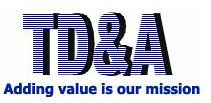
1. What is ISO 14000?
The ISO 14000 Family of Standards
The ISO 14000 family is a set of international environmental management standards developed by the International Organization for Standardization (ISO).
These standards help organizations enhance environmental performance, comply with legal requirements, and minimize negative impacts on the environment. Key standards within the ISO 14000 family include:
- ISO 14001:2015 – Environmental Management Systems (EMS) – Requirements with guidance for use
- ISO 14004:2016 – General guidelines for the implementation, maintenance, and improvement of an EMS
- ISO 14005:2010 – Guidelines for phased implementation of an EMS, suitable for small and medium-sized enterprises (SMEs)
- ISO 14006:2011 – Guidelines for integrating eco-design into EMS
- ISO 14015:2001 – Environmental assessment of sites and organizations
- ISO 14020:2000 – General principles for environmental labels and declarations
- ISO 14024:2000 – Environmental labels Type I – Principles and procedures
- ISO 14025:2006 – Environmental labels Type III – Product lifecycle-based declarations
- ISO 14031:2013 – Guidelines for Environmental Performance Evaluation (EPE)
- ISO 14040:2006 – Life cycle management – Principles and framework
- ISO 14044:2006 – Life cycle management – Requirements and guidelines
- ISO 14050:2010 – Environmental management vocabulary – Terms and definitions
- ISO 14064-1:2018 – Greenhouse gases – Part 1: Specification and guidance at the organization level for quantification and reporting of GHG emissions and removals
- ISO 14064-2:2019 – Greenhouse gases – Part 2: Guidance for quantification, monitoring, and reporting at the project level
- ISO 14064-3:2019 – Greenhouse gases – Part 3: Guidance for the verification and validation of GHG declarations
- ISO 14067:2018 – Greenhouse gases – Carbon footprint of products – Requirements and guidelines
The current version, ISO 14001:2015, focuses on environmental risk management, legal compliance, and performance improvement using the PDCA (Plan – Do – Check – Act) cycle.
2. Benefits of Implementing ISO 14001
Implementing ISO 14001 brings numerous practical benefits for organizations:
2.1. Minimized Environmental Impact
- Identifies and controls environmental aspects of operations.
- Reduces pollution, emissions, waste, and optimizes resource usage.
2.2. Legal Compliance
- Ensures compliance with relevant environmental laws and regulations.
- Helps avoid legal risks and administrative penalties.
2.3. Enhanced Reputation and Brand Image
- Demonstrates social responsibility and commitment to sustainability.
- Improves competitiveness in bidding and international partnerships.
2.4. Operational Cost Savings
- Optimizes use of energy, water, and raw materials.
- Reduces waste and improves production efficiency.
2.5. Supports Continuous Improvement
- Based on the PDCA model, ISO 14001 drives ongoing environmental performance improvement.
3. Who Can Apply ISO 14001?
ISO 14001 is applicable to any organization regardless of size, sector, or location. Common adopters include:
- Industrial manufacturers, processing plants, and construction firms
- Logistics, transportation, and resource extraction companies
- Educational institutions, hospitals, and research facilities
- Organizations aiming to demonstrate environmental responsibility to partners, investors, or the public
4. How Can Organizations Maximize the Effectiveness of ISO 14001?
To gain the full benefits of ISO 14001, organizations must go beyond implementation and actively maintain and improve their EMS. Key actions include:
4.1. Top Management Commitment
- Leaders must show strong commitment to implementing and maintaining ISO 14001.
- Allocate sufficient resources (personnel, budget, equipment).
- Participate in regular reviews and promote environmental management across the organization.
4.2. Staff Training and Awareness
- Conduct regular training on environmental issues, ISO 14001, and relevant legal requirements.
- Encourage staff to identify risks, opportunities, and suggest improvement initiatives.
- Integrate environmental responsibilities into job descriptions.
4.3. Integrate EMS into Daily Operations
- Avoid a “paper-only” system; embed environmental controls into actual workflows.
- For example: waste management, energy efficiency, hazardous chemical checks, emission-reduction maintenance.
4.4. Establish Environmental Performance Indicators (EPE)
- Define relevant metrics such as: electricity/water/raw material usage, emissions, air quality, recycling rate, etc.
- Measure – Monitor – Analyze – Compare over time to drive continuous improvement.
4.5. Comply with Legal and Stakeholder Requirements
- Monitor and update new environmental regulations in the EMS.
- Capture and respond to the expectations of customers, investors, authorities, and the community.
4.6. Conduct Internal Audits and Management Reviews
- Perform internal audits to detect nonconformities or weaknesses.
- Management reviews help set improvement direction and align with long-term sustainability strategies.
4.7. Leverage Technology and Digital Transformation
- Use Environmental Management Software (EMS software) to automate reporting and risk alerts.
- Adopt green technologies: energy saving, recycling, and material reuse.
4.8. Transparent Environmental Communication
- Publish environmental reports for customers, stakeholders, or regulatory agencies.
- Internal communication fosters a culture of environmental responsibility aligned with corporate values.
In Summary:
“ISO 14001 is more than a system – it is an environmental management culture. To achieve maximum effectiveness, businesses must embed this standard into their long-term operational and development strategy.”

